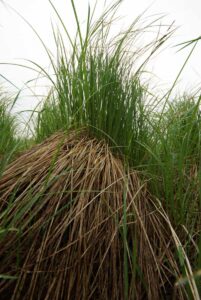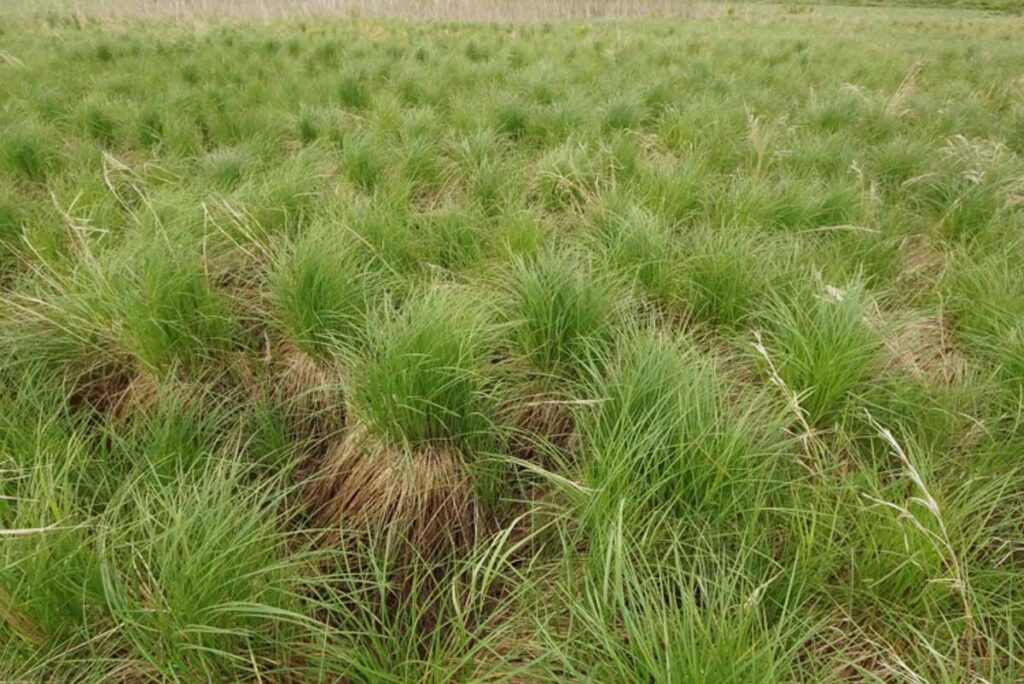Plant Family: Sedge, Cyperacae
Wetland Indicator Status: OBL

Tussock Sedge, or hummock sedge, is a ubiquitous emergent plant in sedge meadows, and is also found around lake shore, ditches, marshes and other wet places. It forms tussocks, or hummocks, sometimes to a height of three feet. These are masses of roots and dead stems that are elevated above the marsh. They provide valuable micro-habitats that are crucial to plant and animal diversity. The elevated portions allow plants that are less tolerant of flooding to
survive. The same is true for insects such as ants; without the tussocks they would be flooded out. These structures also provide a platform for nesting birds. They may also increase the ability of wetland to be navigated by spawning fish such as Northern Pike. Often wetlands dominated by tussock sedge are flooded in spring and dry in the summer. Like many of our sedges and wetland grasses, the leaf edges are serrated, making them very sharp. Don’t run your fingers through the marsh as you are likely to get many thin, deep “paper cuts.”


